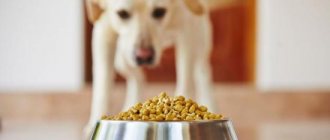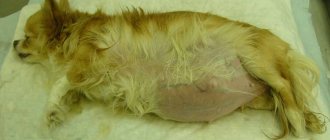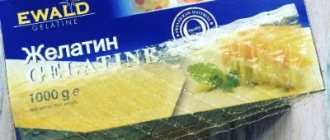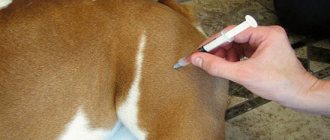Who are dog hunters
Today in the Russian Federation and other countries, the problem of deliberate poisoning of animals by dog hunters is more relevant than ever. Not only stray street dogs and cats suffer from such actions, but also beloved pets. Who are dog hunters and why do they pose a great danger to
Doghunters (dogkillers) are an organized group of people who, uniting through social networks, organize campaigns to persecute stray dogs. The organizers of such associations call themselves defenders of society and humanity from dog infections.
Initially, their activities were allegedly aimed at clearing city streets of stray dogs. But as practice and recent media reports show, animal haters have evolved and began to use forbidden barbaric methods against pets.
In addition to scattered “treats” in the parks, the dog hunter, moved by the dog, comes up to pet it and quietly slips a piece of meat, sausage, or other bait treated with deadly poisons into its mouth.
Animals poisoned by strong poisons die in severe pain after the toxins enter the body. Most often, poisoning ends in death. Unfortunately, it is not always possible to save the dog.
Important! The activities of dog hunters are illegal and cannot be ignored. There can even be poison for animals in playgrounds, so the actions of “virtue” people can harm the health of the child.
How dogs are poisoned by toxic substances
In order for the dog to swallow the poison, dog hunters grind the tablet preparations into powder and disguise the poison in canned food, meat, sausage pieces, liver, sausages, cookies, sweets, and other “delicacies” that will attract the dog’s attention.
Important! Baits are placed on the streets, in parks, at training grounds, near garbage cans, in the habitats of street dogs or walking areas.
Dogs are inquisitive and less picky about food than cats. In addition, poisoning by poisons occurs not only through the alimentary (food) route, but also through airborne droplets.
Danger of poisoning
The problem with intoxication with substances from the “arsenal” of dog hunters is that they seek help too late. Owners do not always understand that the dog is in serious condition. When an animal reacts to being touched on its back, they think that someone has hit it. Treatment with home remedies leads to the fact that the manifestations of poisoning and its intensity increase.
One of the dangers of intoxication is paralysis. If it spreads to the respiratory muscles, breathing stops. In most cases, paralysis progresses gradually. First, the dog loses its hind legs, then involuntary defecation and urination occurs. It is then that a veterinarian is usually called, who ascertains advanced poisoning.
The recovery of a dog after poisoning by dog hunters largely depends on the vigilance of its owners, attention, and patience. It must be remembered that the recovery period is quite long. If you follow all the doctor's instructions, the dog will recover in a few months.
Drugs and poisons used
To prevent poisoning of their pet and other animals, dog breeders should know what toxic agents dog hunters use. There are many remedies, but we will present the most common ones.
Drugs and poisons used:
- isoniazid, tubazid;
- non-steroidal anti-inflammatory drugs;
- metoclopramide;
- digitalis;
- rat poison;
- strychnine;
- zoocoumarin;
- salts of heavy metals;
- arsenic;
- cyanide;
- atropine.
These are the most commonly used drugs that have a toxic effect on the dog's body.
To deliberately poison animals, dog hunters also use alcohol, antidepressants, narcotic substances, poisonous medicinal plants, as well as grapes and even chocolate.
A dog, especially if the dog is hungry, is not averse to eating sweets, but chocolate products contain the alkaloid theobromine, which in high concentrations negatively affects cardiac activity and the nervous system.
Isoniazid, tubazid
Isoniazid (tubazid) is a tablet drug that is prescribed in medicine to patients for the treatment of tuberculosis of all stages and forms. This is the “favorite” among dog hunters’ weapons.
Important! Death from isoniazid, which is a lethal poison for dogs, is very painful. Unfortunately, the anti-tuberculosis drug is sold in any pharmacy without a prescription. The toxic dose is 50 mg of the substance per 1 kg of weight.
For poisoning, it is enough to eat bait poisoned with an anti-tuberculosis drug. Isoniazid is highly soluble in water, so it can be used to prepare various baits.
Even if the dog does not pick up from the ground and walks with a muzzle, for poisoning it is enough to simply lick and sniff the poison . The active substances of isoniazid are instantly absorbed into the gastrointestinal tract, penetrate the bloodstream, affecting the functioning of internal organs (heart, kidneys, liver), and enter the intestines and brain, disrupting the functioning of the central nervous system. The drug causes irreversible changes in the body, so you need to provide first aid as quickly as possible or take the dog to the veterinary clinic.
For a faster effect, dog hunters add other toxic substances to isoniazid, as well as antiemetic drugs (metoclopramide).
The first manifestations of isoniazid poisoning in dogs:
- drowsiness, lethargy, apathy;
- clouding of consciousness;
- foamy salivation;
- debilitating vomiting, nausea;
- change in behavior, anxiety, gives way to depression;
- spontaneous urination, defecation;
- muscle spasms, tremors;
- impaired coordination;
- change in heart rate;
- labored breathing.
If the animal is not helped in time, death occurs from severe intoxication, hypoglycemic coma, convulsions, and paralysis of the respiratory center. Symptoms of poisoning appear within 15-40 minutes. The maximum concentration of the active substances of the drug is observed after one and a half to two hours.
Death is confirmed 2-5 hours after eating the poison. It all depends on age, individual parameters, dosage, composition of the bait with isoniazid.
Atropine
Atropine is found in some types of plants (nightshade, datura, henbane). It is a strong toxic substance with immediate action. Affects the functioning of the nervous system and the psyche of animals. Active substances lead to loss of consciousness, spatial disorientation, heart rhythm disturbances, auditory and visual hallucinations. The dog suffers from convulsions and epileptic seizures. Foam comes out of the mouth. The pupil is dilated and does not respond to light.
Even the largest breeds of dogs die a painful death from atropine within three to seven hours.
Digitalis
Digitalis (digitalis) can also be called one of the favorite drugs of dog hunters, which they use to bait dogs. This is a very dangerous poison for animals.
The dog dies due to serious disturbances in the functioning of the central nervous system, intoxication, and paralysis of the respiratory center several days (7-10) after poisoning with a large dose of digitalis.
Cyanide
Cyanide is a deadly poison with instant action. Cyanides are derivatives of hydrocyanic acid. Potassium cyanide, sodium, cyanide (black cyanide) are mixed into pieces of meat, liver, and sausages and scattered in dog walking areas.
Cyanide has a negative effect on the dog's nervous system. The first symptoms are noted within 30-50 minutes after the dog has eaten the poisoned bait. Breathing is difficult. The pet does not orient itself in space and looks for secluded dark places. Foamy saliva is released from the mouth. The dog is vomiting. There may be blood in the vomit. The heart rhythm is disturbed, the pulse slows down, the pupil does not respond to light. The mucous membranes are pale due to internal bleeding, as cyanide blocks the production of vit. K, which leads to blood clotting disorders.
Gradually the reflexes fade away, the dog falls into a coma and dies in severe agony from paralysis of the respiratory center.
Rat poison
Rat poison is used to bait rodents. This is a potent toxic substance (pesticides, rodenticides) that causes death if help is not provided to the pet in time. A dog can eat a poisoned rodent, drink water from a puddle that contains rat poison, or eat poisoned food bait.
Anticoagulants entering the blood inhibit the production of vitamin K. The blood does not clot, internal bleeding develops. The danger of poisoning dogs with rat poison is that the first signs of poisoning and intoxication develop after several days and do not appear all at once. During this period, irreversible changes occur in the body of warm-blooded animals, the functioning of internal organs, in particular the nervous and respiratory systems, is disrupted.
Symptoms:
- painful stomach;
- lethargy, apathy, weakness;
- bloody vomiting, diarrhea;
- shortness of breath, frequent shallow breathing;
- refusal to eat, increased thirst;
- pallor, cyanosis of mucous membranes;
- convulsions, tremors.
The death of a dog when poisoned with a large dose of rat poison occurs from depression of the respiratory center due to pulmonary edema.
How to help a pet if it has been poisoned by dog hunters. First aid for isoniazid poisoning.
I hate dog hunters.
If you don't like dogs, don't look at them. I never understood this type of hatred. If it turns out that a bad story happened to you and the dog is to blame for it, then what do other owners and their dogs have to do with it?
Today I wrote an article for those who do not know how to provide first aid to a pet in case of poisoning. And also how to prevent poisoning of a pet, including the article will indicate clinical signs of how to recognize that your pet has been poisoned.
Isoniazid (tubazid)
is a medicine used to treat tuberculosis of all forms and is available in the form of tablets with a dosage of 300 mg each.
This drug is available without a doctor's prescription at any pharmacy. I think it’s time to resolve this issue, but for now everything is as it is and it’s not changing. Typically, a wave of poisoning occurs in the spring and autumn. Dog hunters place bait in completely unusual places. Sometimes, in addition to tablets, they add needles and so on to the bait.
I also had a personal case when I saw that my dog almost ate such a “gift”, but fortunately, everything worked out. I searched the entire clearing and found 4 more “linings”. It's terrible what could have happened.
So. Dogs are poisoned more often and this drug is very toxic for them. It is also dangerous for cats, but due to the fact that cats are physiologically structured differently, it harms them a little less.
The drug is absorbed very quickly through the intestinal walls and the first signs of poisoning can be noticed within 30-60 minutes. The maximum concentration of the drug is reached within 2 hours after eating the tablet.
» The principle of the toxic effect of the drug is based on the inability of the dog’s body to effectively metabolize isoniazid (due to the low activity of N-acetyltransferase). The formation of the isoniazid-pyridoxine complex leads to pyridoxine deficiency and, as a consequence, a decrease in the synthesis of gamma-aminobutyric acid (GABA), which is involved in inhibition processes in the central nervous system and also has an antihypoxic effect.” Source: https://vetacademy.ru/
This all leads to oxygen starvation, epileptic seizures, convulsions, hypoglycemic coma, and from all this the animal dies.
When I worked as a receptionist at a veterinary clinic, we were brought in pets with suspected isoniazid poisoning. If the owner hurried and brought it on time, then the chances of saving the pet increase sharply. Time is a very important resource. As a rule, if a pet begins to have convulsions and foam at the mouth, then the chances are rapidly approaching zero and we did not have time to save the animal, but this is not yet an accurate indicator.
If you see that your pet ate something on the street and did not have time to pull it out and “the train has left,” then you need to take the following actions:
1. It is necessary to urgently induce vomiting in the pet in order to remove the drug. To do this, you need to give the dog a solution of soda or table salt, prepared at the rate of 1 tablespoon per 1 glass of warm water, or a solution of hydrogen peroxide in a 1:1 ratio with water. But if time has already passed and more than 30 minutes have passed and the animal begins to have convulsions, then this procedure is strictly prohibited. 2. The antidote to isoniazid is Pyridoxine - Vitamin B6. It is a water-soluble drug (this does not mean that it needs to be diluted somehow, this is a group) and in large doses it is not dangerous. It is quickly eliminated from the body, so there is no need to worry about safety. It helps most effectively when administered intravenously at a dosage of 1 ml per 5 kg of pet’s body weight.
If your pet has already developed severe symptoms of poisoning, such as convulsions, shortness of breath, foam at the mouth, etc., then you should immediately consult a veterinarian. These symptoms need to be relieved only with the help of a specialist. If you do not correctly dose the drug, which in your opinion “should definitely help,” then this can lead to an acceleration of the pet’s already difficult fate.
Symptoms and signs of poisoning
Manifestations after toxic compounds or chemicals enter the dog’s body develop within a few hours or days.
Symptoms and signs of dog poisoning with toxic substances and poisons:
- change in behavior (restlessness, lethargy, depression);
- lacrimation, foamy salivation;
- seizures, tremors, epileptic seizures, convulsions;
- vomiting, profuse diarrhea;
- allergic reactions;
- pallor, cyanosis of mucous membranes;
- refusal of food, lack of or increased thirst;
- uncharacteristic reaction to stimuli;
- dilated pupils;
- unpleasant odor from the mouth;
- decreased blood pressure, heart rhythm disturbances;
- disorientation in space;
- unstable temperature;
- unsteady gait, lack of coordination.
The intensity of clinical signs of poisoning by toxic substances depends on the type, nature of the poison, its concentration, mechanism of action, physiological, individual parameters, and the age of the animal.
Doghunters - dog hunters
In big cities, all dog breeders have heard about them. These are the individuals who throw out intoxicated bait for the dogs.
Various people belong to this trend - some with mental disabilities, some who are balanced. The cause of this behavior is also different - the fight against stray animals; targeted revenge; hatred of animals.
The drugs and poisons used are countless; there are a huge number of such drugs in the world. Even medicines for people are used.
A large number of dog hunters are not particularly sophisticated. They use “canonical” remedies against which there are effective antidotes. But their effect depends on the duration of intoxication. After a few hours it will be powerless.
Is there a universal antidote?
If a dog is poisoned due to the activities of dog hunters, many dog owners are interested in the question “Is there a universal antidote (antidote) for all poisons?” No, unfortunately, there is no single antidote that will be effective in all cases.
Therefore, if your dog is poisoned, and you suspect that the intoxication was caused by the substances listed in this article, urgently take your pet to the clinic or call a doctor at home.
Before the veterinarian arrives, you can provide first aid to the animal by first consulting with a veterinarian.
The only antidote that will help save a dog’s life in case of isoniazid or tubazide poisoning is pyridoxine (vit. B6). The drug is available in the form of injections for intramuscular and intravenous administration. 1 ml of injection solution contains 10 or 50 mg of pyridoxine. The dosage is calculated by weight, as indicated in the instructions for the drug. If the dog weighs up to 20 kg - 3-5 ml, if the dog weighs more than 20 kg - 8-10 ml.
In case of severe poisoning, it is permissible to use the maximum dose, this is 1 ml of B6 50 mg/ml per 5 kg of weight.
Important! The drug is absolutely non-toxic and does not cause side effects if the recommended dosage is exceeded several times.
The anticoagulant for coagulant poisoning of a dog is vitamin K (Vikasol). If it is not possible to determine what caused the poisoning, detoxification therapy is prescribed. Vit K, cardiac glycosides, saline solutions, diuretics, drugs against spasms and seizures are used. In especially severe cases, blood transfusions cannot be avoided.
Dangerous fruits and vegetables for dogs
Don't give dogs raisins and grapes
Grapes and raisins can be extremely harmful to your dog. There are substances in grapes that are toxic to dogs, although it is still unknown what these components are. Do not give this to your dog or it will cause acute kidney failure.
Avoid fruit seeds and their shells
The fruit part of some fruits is generally good and healthy for dogs, but the seeds, pits or their shells (pericarp) are toxic. Apple seeds and peach pits contain chemicals that release cyanide into the body when digested. Pear seeds contain small amounts of arsenic. Be careful with persimmon seeds or plum pits.
- As a rule, poisoning occurs only when a large number of seeds are eaten by a dog.
- To reduce the risk, be sure to remove the core to prevent your dog from accidentally becoming intoxicated.
Avoid adding onions to your food
Onions can be extremely harmful to your dog. Onions are toxic in any form, whether dry, raw, cooked or powdered. It can be dangerous even if it is contained in the complex composition of any product.
- Onions are toxic and can cause anemia or damage to your dog's red blood cells.
Don't give your dog avocados
You may think that avocados are healthy and delicious! Never give it to your dog. It contains something called persin, which can cause allergic reactions in dogs and lead to unpleasant side effects.
- This also includes avocado products such as Mexican guacamole.
Don't let your dog chew corn on the cob
Corn on the cob can cause serious problems if your dog eats it. Honeycombs and cob scales, getting into the small intestine, get stuck there. They will need to be removed by intestinal resection, and if this is not done, your dog may die.
- Corn can be digested by your dog, but too much corn can cause digestive upset. And in general, corn is not dog food!
First aid for a dog in case of poisoning
Before arriving at the clinic or veterinarian at home, you can alleviate your pet’s condition on your own. Considering that in some cases the count is not even hours, but minutes, competently provided first aid to a dog in case of poisoning will save the life of a pet.
At home in case of poisoning:
- The dog is given adsorbents (activated white, black carbon, Enterosgel, Enterosorb, Polyphepam, Atoxil);
- Induce vomiting to cleanse the body of toxins;
- Rinse the stomach with specially prepared solutions;
- For anxiety, sedatives and medications that relax the muscles are used. The dog, if it is in the medicine cabinet at home, is given 1-2 tablets of Gidazepamam or Phenazipam. These drugs are available with a prescription.
- If you have muscle spasms or convulsions, consult your veterinarian about what medications to give your pet.
- To speed up the removal of toxins from the body, give your pet a diuretic medicine.
Subsequently, the dog is kept on a starvation diet for 24 hours without restriction in drinking water, and symptomatic medications are used, the effect of which is aimed at normalizing the general condition and normalizing impaired organ functions.
Important! Enemas and some sorbents cannot be used if the dog has been poisoned by alkalis, acids, coagulants, or the dog has convulsions, fits, or neurological disorders. Do not induce vomiting if the dog is unconscious or more than 2-2.5 hours have passed since the poisoning.
If a dog is poisoned with coagulants, rat poison, or other pesticides, internal bleeding must be stopped as quickly as possible. To do this, the dog is given an injection of Vikasol (1-2 ampoules).
To normalize liver function, give your pet Heptral, Essentiale-Forte, and other hepatoprotectors for 7-9 days.
But in any case, even if the dog feels better, we recommend contacting a veterinary clinic . The veterinarian must examine the dog, and, based on the results of studies and tests, prescribe further treatment and supportive therapy.
Dog hunters: what is used to poison dogs and what to do if a dog is poisoned?
Dog hunters are dog killers. These people believe that they are doing a good deed by clearing the streets of stray dogs. With such cruelty and frenzy, only born killers and maniacs can wish for the death of already unfortunate animals without a roof over their heads. And it just so happens that it is impossible to bring them to justice, due to the fact that they act secretly, leave baits with poison at night, and besides, our legislation is not tailored to the protection of animals, so to speak.
On the topic of the day, as they say. Today an elderly couple brought a small half-dead dog (a half-dead Jack Russell terrier) to our clinic. It was a terrible sight: bloody foam from the mouth, convulsions and convulsions, vomiting. You should have seen the eyes of these poor people who did not understand what was happening to their poor pet. Fortunately, the dog was saved, but the consequences after such a terrible poisoning will last a lifetime, but only time will tell what kind of complications will be observed.
In view of everything that happened, I would like to tell you, dear friends, how to protect your dog from the bait of dog hunters and how to act. if your pet still tries it.
What we poison our dogs with:
1. Isoniazid (Tubazid)
- the most common poison used by dog killers. This anti-tuberculosis medicine is a terrible poison for them. Depending on the amount of poison that enters the body, death occurs from 15 minutes to 2-3 hours, during which the animal experiences terrible agony. In order to kill a dog up to ten kilograms (Pomeranian Spitz, Miniature Pinscher, Rabbit Dachshund, Yorkshire Terrier, Affenpinscher), you only need a few tablets.
2. Metoclopramide.
This antiemetic in large quantities is also poison for any dog. Death occurs within a couple of days, through paralysis of breathing.
3. Digitalis.
This is a favorite remedy for many dog hunters. Death occurs gradually: within ten days.
4. Atropine.
It has an immediate effect on the psyche. After eating this drug, even a large animal (alabay, Tibetan mastiff, kangal) will not live more than 3-5 hours.
5. Arsenic.
Due to its availability, arsenic occupies a leading position in the “use rating”. The animal dies within a short period of time: from 30 minutes to two hours.
Forms of poison used
Most often, dog hunters mix poison with minced meat and make some kind of cutlets from the resulting mixture. Dog hunters also like to make this “delicacy”: poison is put into soaked bread, which is then sprinkled with sugar. Hunters do not even skimp on liver or liver sausage for future victims. It is also heavily flavored with poison. Pieces of fat are replaced with tablet crumbs or the poison is ground into powder and poured on top. Sometimes the tablets are inserted into cuts made in the sausage so that they are not visible.
In winter, poison is often added to cottage cheese and sprinkled on snow. Such bait is difficult to distinguish on white snow and owners often do not notice it, but pets find it by smell and manage to lick the poison.
How to protect your dog.
Now that you know in what form dog hunters “serve” the poison, you can do everything possible to avoid this terrible fate for your pet.
— Be vigilant when walking and keep a good eye on what your pet might eat.
— Pay attention to people who are walking in the dog walking area without a dog and, if you have any suspicions, contact the local police officer.
-Put a muzzle on the dog. In this form, she will not only not pose a danger to others, but also to herself, since she will not be able to eat anything.
— Choose places to walk: don’t let your dog go behind garages and dig in and around trash cans. Keep your dog in your arms or on a leash. If you let her go, play with her or pay close attention to where she runs and what she does.
- Don't let a stranger feed your pet.
If something suddenly happens:
Important!
In your first aid kit you should always keep ready
syringes
of different sizes, several packs of
vitamin B6 (pyridoxine
), a pack of ampoules
of Vikasol, Caffeine
or
Cordiamin
injections (
Sulphocamphocaine
)
, Mexidol injections.
How can you understand that your pet has become a victim of poison left by dog hunters?
- Loss of orientation
- unsteady gait
- salivation
- vomit
- convulsions
- shiver
- moans
- blood from the mouth, nose or anus
- foaming at the mouth
These symptoms may be similar to those of some other diseases, so be as attentive as possible to your pet's behavior.
What to do in case of poisoning:
If you admit the possibility of serious poisoning, then you need to take the following actions that can save your pet’s life.
Important !
By following these steps
immediately.
go to the veterinary clinic. When an animal is poisoned, it needs IVs! (to remove toxins from the blood and parental nutrition).
Do not forget to tell the doctor what drugs and in what dose you administered to the animal.
1. Inject B6 (pyridoxine) intramuscularly at a dose of 1 ml per kg of animal weight: if the dog is 5 kg, therefore 5 ml of B6, etc. If you don’t know exactly how much the dog weighs, take the weight offhand and even a little more. There will be no harm from pyridoxine.
2. Inject Vikasol intramuscularly at a dose of 1 mg per kg of animal body weight, which will help stop internal bleeding and save even in case of poisoning with rat poison. If the ampoule says 10 mg/ml, then the entire ampoule weighs 10 kg, but if your dog weighs, for example, 3 kg, then you need to make 0.3 ml.
Instructions for gastric lavage
In case of poisoning with strong poisons, it is necessary to provoke vomiting in order to cleanse the body of toxins and chemicals with the vomit. Since the gastric lavage procedure is not pleasant for animals, ask an assistant to hold the dog during the manipulations.
Instructions for gastric lavage for a dog:
- Place the dog on a flat surface covered with a disposable diaper.
- Fix the dog in one position, holding the limbs and muzzle.
- Prepare a syringe and gastric lavage solution.
- For washing, use a weakly concentrated solution of potassium permanganate, a saline solution (1 glass of salt per 0.5 liter of warm water), a soda solution (a teaspoon of soda per 0.5 liter of water).
- Pour in the liquid gradually, in small portions. Make sure your dog doesn't choke, as this can lead to aspiration pneumonia.
- Pour the solution into the mouth until the vomit becomes clear.
To quickly provoke a gag reflex, use your palm to gently press into the stomach area. Massage the tummy at the base clockwise.
Some time after cleansing the stomach, give your pet any adsorbent. You can put in a drip and administer Ringer-Lock solution. You can also give a laxative (vaseline oil) after an hour. But discuss all further steps to normalize the condition over the phone with your veterinarian.
Remedies against isoniazid
If there are also remedies against this medicine. The antidote to isoniazid is a B vitamin, or rather Pyridoxime. Pet owners should always have this product on hand, which can be purchased at any pharmacy. The dosage of the drug can be found in the instructions for use. However, there are simply no overdoses, so you should not be afraid of harming your animal. According to the rules, you need to administer one milliliter for every five kilograms of the dog’s weight. Inject intravenously. But, if you cannot give an intravenous injection, then you can also give an intramuscular one. This treatment helps with the toxic effect of the drug, and the convulsive syndrome disappears almost immediately. The dog will not regain consciousness immediately, but after several hours.
After administering the antidote and inducing vomiting in animals, it is necessary to finally remove the remaining poison. To do this, use special agents that adsorb poison in the intestines:
- take one or two teaspoons of polysorb and thoroughly dissolve it in a glass of water;
- take one heaped teaspoon of enterosgel and dilute it in a quarter glass of water;
- you can use the old proven method - this is activated carbon, but it is difficult to work with because you will need to dissolve it in water, and before that crush about ten to twenty tablets.
After the manipulations done, the dog should feel much better. Then you need to show him to the veterinarian. He will prescribe the necessary treatment according to the symptoms that still remain at the time of examination of the dog.
Safety rules when walking a dog
To protect your beloved pet from poisoning with potent poisons and deadly toxins, you need to follow a few simple recommendations.
Safety rules when walking dogs:
- From the first walks, wean your pet from picking up anything from the ground. If you have no experience in raising dogs, enlist the help of a dog handler.
- Monitor your dog carefully during walks. If the dog still tries to pick something up from the ground, wear a muzzle. Although it does not provide 100% protection, it still reduces the possibility of nutritional poisoning.
- Do not allow your dog to pick up “treats” near containers with household waste or under balconies. Make sure your dog doesn't accidentally wander into the basement. Walk away from trash heaps and landfills.
- While walking, if you notice suspicious actions of a stranger who is scattering something on the territory, inspect his place of stay and warn your dog walkers.
- Do not allow strangers to pet your dog. Remember that lately dog hunters have been acting brazenly and poisoning dogs without being embarrassed by the owners.
Well, one last piece of advice. Always keep a complete veterinary first aid kit on hand, which should contain disposable syringes, several ampoules of vitamin B6, Vikasol, absorbents, glucose, antiseptics, and other products that may be needed when providing first aid to a dog.











